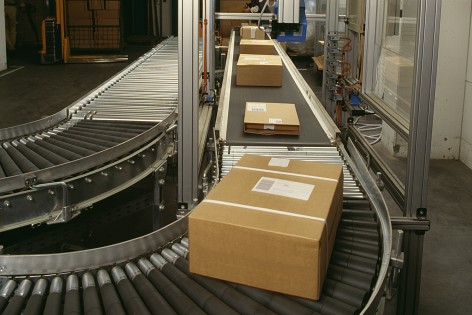Wasp Barcode Technologies: The Barcode Solution People
3 ways small businesses can keep up with Amazon

Current shopping and delivery trends have spoiled consumers. It’s no longer acceptable to wait weeks for a purchase to arrive from a company after buying. Instead, customers expect products to arrive within days. Luckily, there are resources available to help small businesses ship products to consumers quickly. Below are three ways small business owners can ensure goods are delivered to customers more efficiently in order to stay competitive and to leave customers happy in order to secure their continued business.
1
. Implement Proper Inventory Tracking

The first part of delivering products to customers in a timely manner is to ensure inventory is available. 31% of consumers want a fixed date with regards to delivery options and 24% expect
next day delivery or the ability to pick up from the store. If you don’t have an inventory tracking system currently in place for your small business, you run the risk of exhausting popular goods as people buy them. As a result, you won’t be able to send to customers right away, leaving them disgruntled and likely not compelled to purchase from your business again. An
inventory tracking solution guarantees you have the needed, on-hand inventory and also notifies you of items needing restocking before they completely run out. This valuable and accurate information means you will make better decisions when ordering products and will allow you to have inventory ready when it’s purchased.
2.
Collect Useful Data
Successful businesses have always collected customer data, but conversations have shifted to focus on the best ways to use that information. As a small business owner, one way to utilize data is to improve your shipping and delivery efforts. If you collect the right data about your consumers, you can make shipping quicker and more efficient. For example, according to an article by
The Verge, Amazon plans to
utilize consumer data, such as past purchases, wish lists, and how long the user’s cursor hovers over an item, to help them improve their shipping efforts and cut delivery times. Apart from using a
drone program to speed up delivery, using these customer shopping patterns will help Amazon determine what is going to sell well and preemptively box and load products onto trucks; effectively guaranteeing those products will reach consumers quicker. Of course, for small businesses, it may be difficult to implement a plan to that degree; however, analyzing data does give you a better forecast of what items people will want to purchase, so you can prepare to have that inventory ready to ship.
3.
Choose the Right Location

When
choosing which distribution center or shipping facility to work with, it’s important to focus on where they are located. Perhaps you want to work with a shipping organization that is close to your small business in order to communicate more effectively about sending packages. On the other hand, you may want to consider working with a shipping facility that is in an area where you consistently receive a high volume of orders. Either way, the decision of which distributor to partner with should not be a quick one. It’s recommended that you analyze your sales and shipping data to determine the right location that serves both your day-to-day business operations and your ability to get goods to customers quickly.
In order to stay competitive in today’s market, small business owners must consider ways to efficiently get packages delivered to customers faster. Inventory tracking is one way to collect data about products that are selling well and those that aren’t. You can utilize that information to help with purchasing decisions as well as to ensure you have the proper products available and ready to be delivered after purchase. Visit the Wasp website to learn more about implementing an
inventory management solution for your small business.
 Current shopping and delivery trends have spoiled consumers. It’s no longer acceptable to wait weeks for a purchase to arrive from a company after buying. Instead, customers expect products to arrive within days. Luckily, there are resources available to help small businesses ship products to consumers quickly. Below are three ways small business owners can ensure goods are delivered to customers more efficiently in order to stay competitive and to leave customers happy in order to secure their continued business.
1. Implement Proper Inventory Tracking
Current shopping and delivery trends have spoiled consumers. It’s no longer acceptable to wait weeks for a purchase to arrive from a company after buying. Instead, customers expect products to arrive within days. Luckily, there are resources available to help small businesses ship products to consumers quickly. Below are three ways small business owners can ensure goods are delivered to customers more efficiently in order to stay competitive and to leave customers happy in order to secure their continued business.
1. Implement Proper Inventory Tracking
 The first part of delivering products to customers in a timely manner is to ensure inventory is available. 31% of consumers want a fixed date with regards to delivery options and 24% expect
The first part of delivering products to customers in a timely manner is to ensure inventory is available. 31% of consumers want a fixed date with regards to delivery options and 24% expect  When
When 

